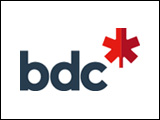Research conducted by the Prairie Swine Centre indicates altering the omega-6 to omega-3 fatty acid content in the diet of the sow will influence the ability of her piglets to deal with stress at weaning.
Scientists at the Prairie Swine Centre are attempting improve the ability of piglets to withstand the nutritional, environmental and social stressors that contribute to post-weaning growth lag by altering the omega-6 to omega-3 fatty acid ratios in the diet of the sow.
Laura Eastwood, a Ph.D. Student with the University of Saskatchewan, explains sows were fed a control diet, or plant-based diets containing a 10 to 1, a 5 to 1 or a 1 to 1 omega-6 to omega-3 ratio or a 5 to 1 fish-oil-based diet to alter the fatty acid content of the milk then, after weaning, half of the piglets were injected with lipopolysaccharide to elicit an immune response and half were injected with saline as a control.
All pigs that were injected with LPS, first off, definitely elicited an immune response.
They had an increased fever and increased cytokines regardless of which diet they were fed.
However we also found that, as our fatty acid ratio dropped too low, our 1 to 1 diet ratio pigs actually had an increased fever response relative to the other diets as well as had an increased production of one of the pro-inflammatory cytokines we measured, IL-8.
That to us indicates that these pigs are mounting a greater immune response.
The question now is whether or not that’s a good thing or a bad thing.
Are they having an overreaction of an immune response or is it better they can mount more of an immune response during that stressful time.
Eastwood acknowledges there is still a lot work needed to determine the best ratio and also how it will affect the energetic metabolism of the pigs but once the optimal fatty acid ratio is identified it will be a huge benefit in reducing growth lag at weaning.
Source: Farmscape.Ca



